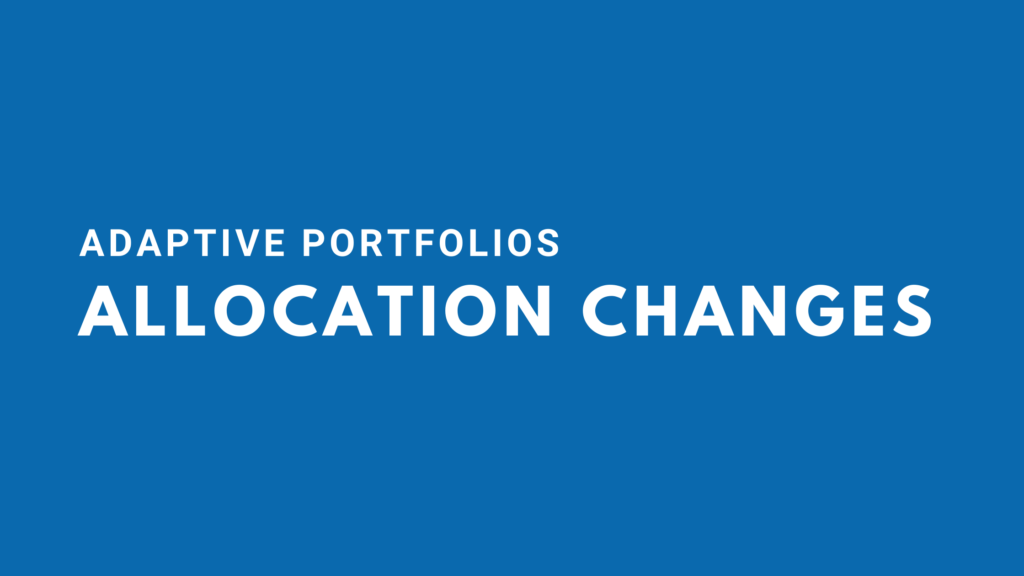We made adjustments to reduce portfolio risk to the Defensive allocation. This blog post outlines the rationale for our allocation changes.
Returning to a focus on capital preservation
Our investment process emphasises the difference between an environment generally supportive of equities, which is more or less the normal state of affairs, and a more challenging environment where one with long term benefits in terms of better risk adjusted return and less stress can benefit from holding a decisively defensive portfolio. With the challenges piling up as listed below and as captured and quantified in our algorithms, it is now time to position defensively. Should things improve, our algorithms will revert, and we stand ready to increase risk exposures to capture the market upside as we did in the 18 months leading up to the end of 2021.
The latest risk event is the dramatic increase in Russian aggression and its large-scale invasion of Ukraine. This, along with a change in the West’s attitude to Putin and his regime and the ongoing development in both specific sanctions, individual countries’ policies and the military conflict, is sending shockwaves through the world and global markets. Commodity prices have moved higher increasing fear of prolonged energy price inflation. This, in combination with a more general fear for the state of the world and the future security situation, pushed equity market momentum down further.
The war in Ukraine is coming on the back of risk of a cyclical deceleration, declining earnings growth and the fear of a further hard landing for the Chinese real estate sector, credit market nervousness and a tightening of monetary policy. In this context, aggregate equity market momentum has now turned decisively negative, illustrated by the dark blue line in Figure 1 below. With mildly positive, but stagnant business cycle momentum, the risk is now that this becomes a self-fulfilling movement where fear feeds on fear and equity risk leads to wider credit spreads, which hits risk appetite further.
Figure 1: Global Equity Market momentum has now turned negative
We maintain our view that this is not likely to lead to a global recession. The Chinese government is working to stimulate the economy and the US consumer is supported by jobs, salaries and a solid housing market with increasing house prices. Even if we do not expect a recession we still see significant
risks on the horizon. These include but are not limited to:
- Commodity price moves are unpredictable, and the risk of additional spikes has increased. Many politicians have started warning about this, possibly because they are looking to accept more severe sanctions.
- Inflation could prove stickier or even spike up. A year ago not many credible forecasters saw the move to 7% in the US CPI but here we are, so our trust in inflation forecasts should be limited.
- The market is now pricing a hike of 25bps from the FOMC meeting in March and 6 times 25bps this year. However, nothing has fundamentally changed in the US economic outlook since Putin started his war and the market priced a start to hiking of 50bps.
- We think that on balance it is likely that China will have a dampening effect on Russia. With their caution, long-term view and strategic need for commodities this is likely to be mainly behind the scenes and there is a risk that we are too optimistic when thinking China will try to restrain Putin.
- There is a risk that that Russia feels so successful or so threatened that they move on to a larger scale confrontation and try to “liberate” Russians in other neighbouring countries.
When we move into a defensive portfolio, it is not necessarily because we expect markets to crash. What we are positioning for is a situation where the chances of severe and potentially self-reenforcing loss have increased. In these situations, we prefer to hold our clients’ assets in defensive portfolios awaiting opportunities to more decisively engage in equities when the risk return trade-off is better. With the challenges piling up as listed above and importantly as captured and quantified in our algorithms, it is now time to position Defensively. Should things improve our algorithms will revert and we stand ready to increase risk exposures to capture the market upside as we did in the 18 months leading up to the end of 2021, but for the time being we have reduced further the allocation to equities and high yield bonds across our strategies and are positioned as follows:
- Across our growth portfolios and systematic equity strategies we reduce our equity positions further from 70% or 60% to 25% or 10% of the portfolios and hold core US market positions. The proceeds are invested in US government bonds as a diversifier and potential return stabilizer in times of market stress.
- In our diversified strategies we have reduce equities further from 30 or 40% to 15%, 10% or zero depending on the profile and role of the portfolio and we reduce high yield positions from 30% to 10% and in some cases all the way to zero. The proceeds are invested in medium duration US government bonds.
- Across our Global Fixed Income Opportunities strategies, we reduce the high yield exposure further from 70% to a range between 40% and 10% depending on the specific portfolio. As in the other strategies we have invested the proceeds in government bonds.
In summary, our algorithms do not signal that markets will necessarily collapse, but the risk of a self-fulfilling negative spiral has increased and we have positioned our strategies defensively with a focus on capital preservation. As always, we stand ready to increase our risk position as and when the situation and the outlook improve.



